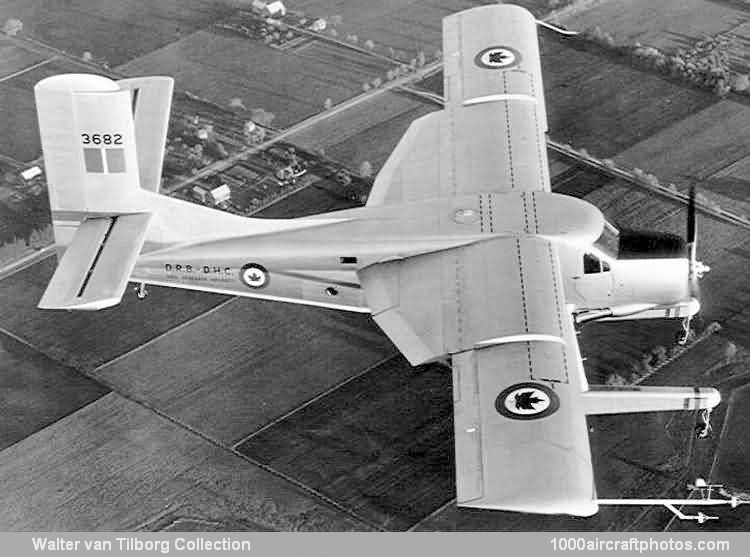02/09/2004. Remarks by Johan Visschedijk: "In 1956 de Havilland Canada (DHC) started a research program to assess the aerodynamic performance, stability and control problems of STOL aircraft. Using a DHC-3 Otter on loan from the RCAF (3682 c/n 40), the program was supported by the Canadian Defence Research Board (DRB).The Otter was chosen because its existing configuration well suited it for the intended research. The initial phase of the program was devised to assess the potential of a deflected slipstream configuration.
Therefore the aircraft was fitted with large flaps on the wing sections inboard of the wing fences and ailerons, this necessitated enlarging the tail surfaces and incorporating dihedral on the tail plane. The unusual landing gear was based on the standard seaplane chassis as the simplest way to simulate a tricycle landing gear. First flight took place in 1959 and this configuration made it possible to maintain stable flight at speeds 10 mph slower than the standard Otter.
In the next phase the large flaps were removed and a 2,450 lb (1,111 kg) thrust General Electric J85-GE-7 turbojet was installed in the rear fuselage. The engine was fitted with adjustable nozzles to give the pilot positive control of the rate and angle of decent (a crude form of vectored thrust) and to make accurate pinpoint landings. The unusual landing gear was modified to provide about twice the standard energy absorption.
Flight testing during 1961-1962 proved that minimum speeds as low as 48 mph (77 kmh) were obtainable through the use of airscrew slipstream deflection at the Otter's normal all-up weight of 8,000 lb (3,628 kg). STOL landing techniques were investigated using the unique control capability of in-flight reverse thrust. This permitted a higher degree of STOL landing performance consistency, even for very short landing distances. Take off was improved by deflecting the thrust rearwards.
In the third phase the aircraft was fitted with two 500 hp Pratt & Whitney Canada PT6 turboprops attached to the Otter wing. The original Pratt & Whitney R-1340 radial was removed from the forward fuselage and a solid nose fitted. In this configuration with the GE J85 still operable the gross weight was increased to 9,500 lb (4,309 kg), 1,500 lb (680 kg) over the standard Otter. The landing gear was modified again to absorb the increased landing weights and rates of decent.
The program came to an end in 1965 and much of the data gathered during the tests flights and roughly the configuration were used to design the DHC-6 Twin Otter."
